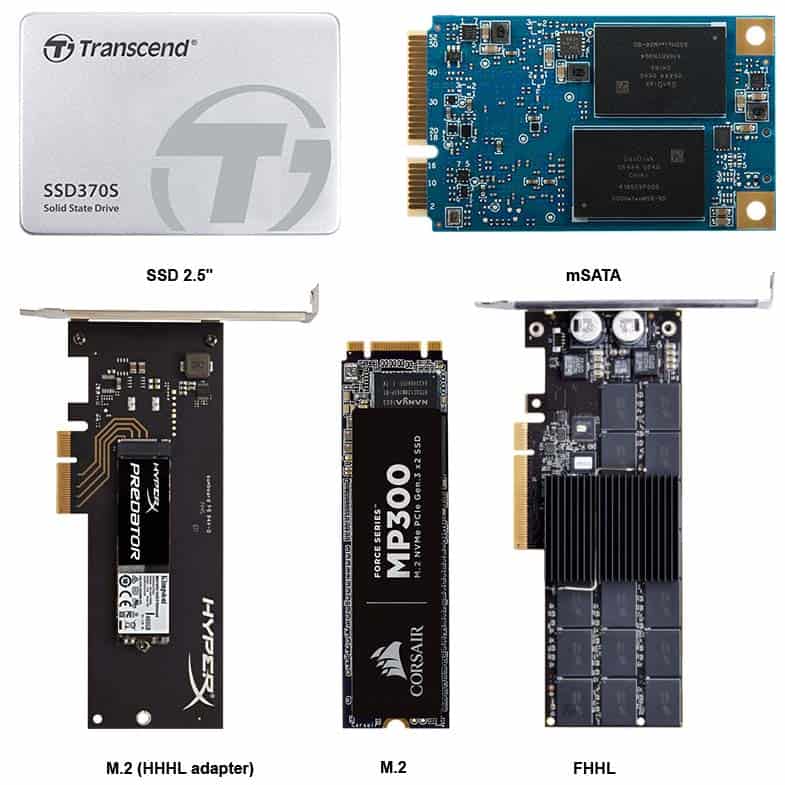Bruce Cullen, the founder of eProvided states NASA and consumers rely on SSD drive recovery. “Most all laptop computers, iPhones, smart phones, voice recorders, USB sticks, SSD drives, iMacs and notebooks have NAND chips and solid state drive technology onboard.” But there is much more to the story and a bit about NASA and the Mars Space Missions.

eProvided, Solutions Now.
Data recovery services provide recovery of files on a variety of operating systems and drives based on MLC or SLC NAND modern technologies. By design, current generation SSD controllers include ever-evolving innovations and top-level encryption protocols to safeguard the protection of stored data. It also supplies around 100% better data security compared to leading enterprise HDD’s. Can NAND chip technology work safely with the growing demand on fast, safe and rugged Solid State Drive Controllers? Time will tell. Most data recovery companies are having a tough time deciding the best methods to extract and recover data from these solid state storage drives. Meanwhile, for more information on NAND data recovery, click here!
The Future, NASA, (JPL) Mars Landings Rely on SSD’s & SSD Drive Recovery.
 NASA (JPL, Pasadena, CA) plans ahead for SSD failure. In a recent call to eProvided, NASA’s ‘Low Density Supersonic Decelerator’ team has asked eProvided.Com’s founder Bruce Cullen to assist in data loss prevention for future Mars space missions. The ‘Red Planet’ and new discoveries in science “need reliable Solid State Drives”, says Bruce Cullen. With a unique and extensive background in technology, business, Wall-street and amazingly enough dance music, Bruce Cullen based in Las Vegas, Nevada hope to assist in preventing data loss & future Mars Mishaps.
NASA (JPL, Pasadena, CA) plans ahead for SSD failure. In a recent call to eProvided, NASA’s ‘Low Density Supersonic Decelerator’ team has asked eProvided.Com’s founder Bruce Cullen to assist in data loss prevention for future Mars space missions. The ‘Red Planet’ and new discoveries in science “need reliable Solid State Drives”, says Bruce Cullen. With a unique and extensive background in technology, business, Wall-street and amazingly enough dance music, Bruce Cullen based in Las Vegas, Nevada hope to assist in preventing data loss & future Mars Mishaps.

Low Density Supersonic Decelerators & NASA
“Future robotic missions to Mars and eventual human exploration of the Red Planet will require that more massive payloads than the one-ton Curiosity Mars rover prevail to the surface. NASA is developing new large, sturdy, and lightweight systems to deliver next generation rovers and landers on Mars. Above all, these new technologies would be able to slow larger, heavier landers from the supersonic speeds of Mars atmospheric entry to the subsonic ground-approach speeds necessary for a safe landing.” Now this becomes a story for your grandkids.
Who is ready for space camp? ~ https://www.jpl.nasa.gov/missions
Bruce Cullen states, “There are many benefits to Solid State Drives…”
- Massive data transfer speeds.
- Impressive read/write speeds: Up to 1500MB/s Sequential Read – Up to 1300MB/s Sequential Write & Up to 230,000 IOPS.
- Storage Space, 240GB, 480GB, 960GB, drives like the OCZ (Recently purchased by Toshiba) RevoDrive 3 X2 PCI-Express (PCIe) SSD.
- New Advances in VCA 2.0 flash virtualization “software that allow certain direct memory access (DMA) and data management functions”.
- Durability: SSD’s have absolutely no moving parts, it’s more likely to keep your data safe.
- Solid State Drives couldn’t care less where its data becomes stored on its NAND chips. There’s literally no physical read heads involved. SSDs are much faster.
- Combine 4 SSD’s in a RAID 00 system. Talk about quadrupling read write performance. Any heavy data user or music producer can export data/files at mind-blowing speeds.
It’s no surprise, SSD drives are amazingly fast and efficient. This new technology has much room to grow, imagine this technology 10 years from today. In other words, everything is becoming faster, bigger and much safer for the environment.
As NAND technology continues to evolve, so does the need for advanced controller systems that can manage data flow with precision. This mirrors the robotics field, where specialized controllers are essential for directing robotic movements and processing real-time data. Learn more about the most common types of robotics controllers and their role in driving automation forward.
“It amazes me where technology is going today, I am so pleased to be involved, this, the fourth time being called by NASA… recovering the mission data from the Helios mission after it crashed into the Pacific in 2003 was an honor. Taking a walk on the beautiful strip of Las Vegas Blvd, producing music and benefiting space exploration all at once, it’s a dream come true!” states Bruce.
Complexity of NAND Storage SSD Drives – SSD Drive Recovery, NAND Chip Technology.

Example of some SSD Form Factors
The complexity and highly exclusive features can make some data recovery difficult when an unforeseen solid-state drive failure occurs. Unlike hard disk drives, many newer solid state storage devices have no proper data set relocating components. This creates an incorrect perception that data is much more secure on SSD’s, which, unfortunately, is not always the case.
Firstly, SSD’s have greater susceptibility to some defects that normal hard drives are not as susceptible to. This consists of sudden power loss, electromagnetic fields and electrical charges, static electricity, physical damage and surface mount controller oxidation issues when compared against typical HDD’s.
Due to the solid storage data having limited cycled patterns, the ability to create new data can eventually wear out and lead to possible data loss depending on the technology used. On Solid State Drives, when a block loses its ability to retain data or when data errors occur that cannot be corrected by the drive’s error correction algorithm (ECC – AKA: error correction code). The block is switched to a readily available block. When the extra blocks are exhausted, the solid state drive can easily reach a critical failure state. At this point, the SSD data is lost and the need for data recovery is imminent. Innovations in error correcting code, ECC, will extend the drive’s operating life. It also benefits system-level performance if the design is correctly implemented.
NAND Problems and Benefits, Preventing Data Loss, Risk vs. Reward.
A variety of problems can occur with NAND; however, benefits of NAND also exist. For more information, take a closer look at the list below.
NAND Benefits.
- Up to 100,000 P/E cycles.
- Fastest and highest density throughput of the various NAND modern technologies such as MLC and TLC.
- Compatible with the ONFI concurrent interface.
- Strong performance and endurance.
- Enables large amounts of memory subsystems.
- Increased power performance.
- Increased bandwidth.
NAND Problems.
- Disruption of Reading. The method used to read NAND wafers and controller chips could create close-by cells in the exact same memory block to gradually change the programming. The number of reads is in the hundreds of thousands reads between the eliminations of program operations.
- Block erasure – can become removed from a “block”.
- Memory wear – when flash memory’s limited on how many times the program (PE) cycle could erase itself.
- Bit Errors – makes it unreliable.
Federal Regulatory Demands.
As a result of modifications in federal regulatory demands, and the expansion of state rules impacting data protection and privacy, any third parties which execute key support functions for an organization that requires analyzation.
These audits determine if the provider’s data holding and processing controls are completely safe and secure in both their design and functional performance. Networks are becoming safer and secure by safeguarding private and vital business data from safety breaches.
After that the safety protocols and certifications are verified to ensure the business is qualified to carry out SSD recovery on gadgets that hold financial, healthcare, government, and various other sorts of very private information.
NAND wafers and controller chips have been the single biggest change to drive innovation in the last few years. NAND storage appears in data centers, high-end laptop computers like Apple’s MacBook Air and memory cards in mobile devices such as Apple’s usage of NAND flash in its well-known iPods and iPhones.
Flash memory chips obtain of either NOR or NAND gate entrances. Created by Toshiba, NAND flash works like a disk as opposed to memory. It has faster erase and write cycles, higher density and ten times the endurance of NOR flash. Its I/O user interface allows only consecutive access to data, which makes it suitable for mass-storage devices and much less beneficial for computer memory. Additionally, NAND flash forms the core of the detachable USB storage device. Overall, NAND wafers and controller chips create amazingly efficient flash memory and super fast solid-state drives today.
About eProvided.
eProvided handles forensic data recovery, NAND flash recovery, SSD data recovery, microchip repair, USB recovery and chip replacements. eProvided specializes in advanced data recovery services for consumers, and companies worldwide. eProvided works closely with businesses, the military, NASA, US special agents, end users and officers of the peace. If you have any questions, contact us or Begin Service Now.
